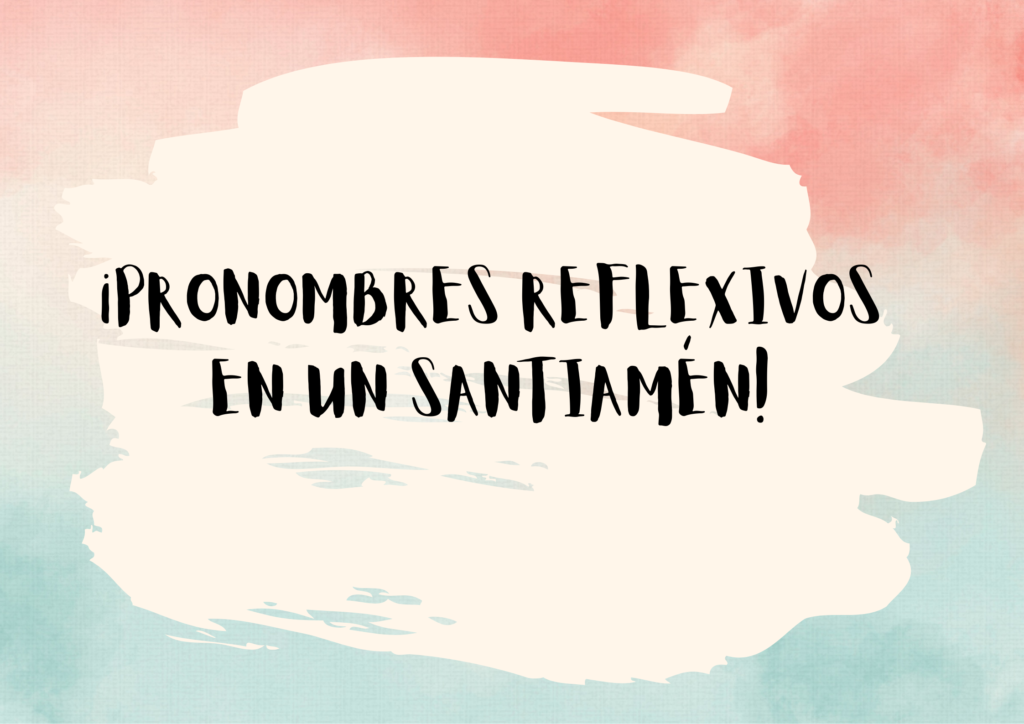
WHAT IS A REFLEXIVE PRONOUN?
When you use reflexive pronouns in a sentence, it means that the subject is both doing the action and receiving the action. So instead of saying something like “Juan looks at Juan“, you can say “Juan looks at himself“.
This way, you can use a single pronoun to describe the action and avoid repeating the subject.
Here, I’ll show you the reflexive pronouns both in English and Spanish. Listen to Noemí, a voice from Mexico, as she reads out loud the Spanish ones.
| Person | Reflexive Pronoun (English) | Reflexive Pronoun (Spanish) |
|---|---|---|
| yo | myself | me |
| tú | yourself | te |
| usted | yourself | se |
| él-ella | himself/herself | se |
| él-ella-ello | itself | se |
| nosotros-nosotras | ourselves | nos |
| ustedes | yourselves | se |
| ellos-ellas | themselves | se |
| vos | yourself | te |
| vosotros-vosotras | yourselves | os |
TIP! Note that the reflexive pronoun se can refer to himself, herself, itself, themselves, or yourselves, depending on the context.
Let’s see a few examples. As you can see, in Spanish, reflexive pronouns usually go before verbs:
I hurt myself while playing soccer.
Me lastimé mientras jugaba al fútbol.
They enjoyed themselves at the party.
Ellos se divirtieron en la fiesta.
He found himself in a difficult situation.
Se encontró en una situación difícil.
She blamed herself for the mistake.
Ella se culpó por el error.
When the verb is an infinitive or gerund, we can put the pronoun before or after the complete verbal structure. If we put it after the infinitive or gerund, it becomes part of the word.
We need to take care of ourselves.
Nos necesitamos cuidar.
Necesitamos cuidarnos.
We are taking care of ourselves.
Nos estamos cuidando.
Estamos cuidándonos.
And now, let’s play these games so you learn this in a snap!
GAME 1
GAME 2
GAME 3




